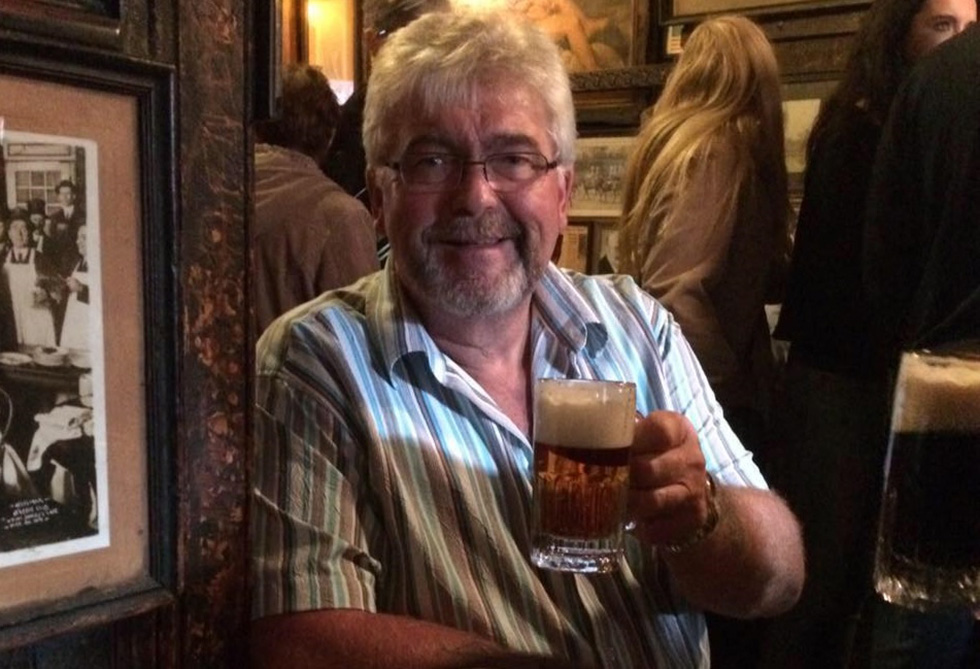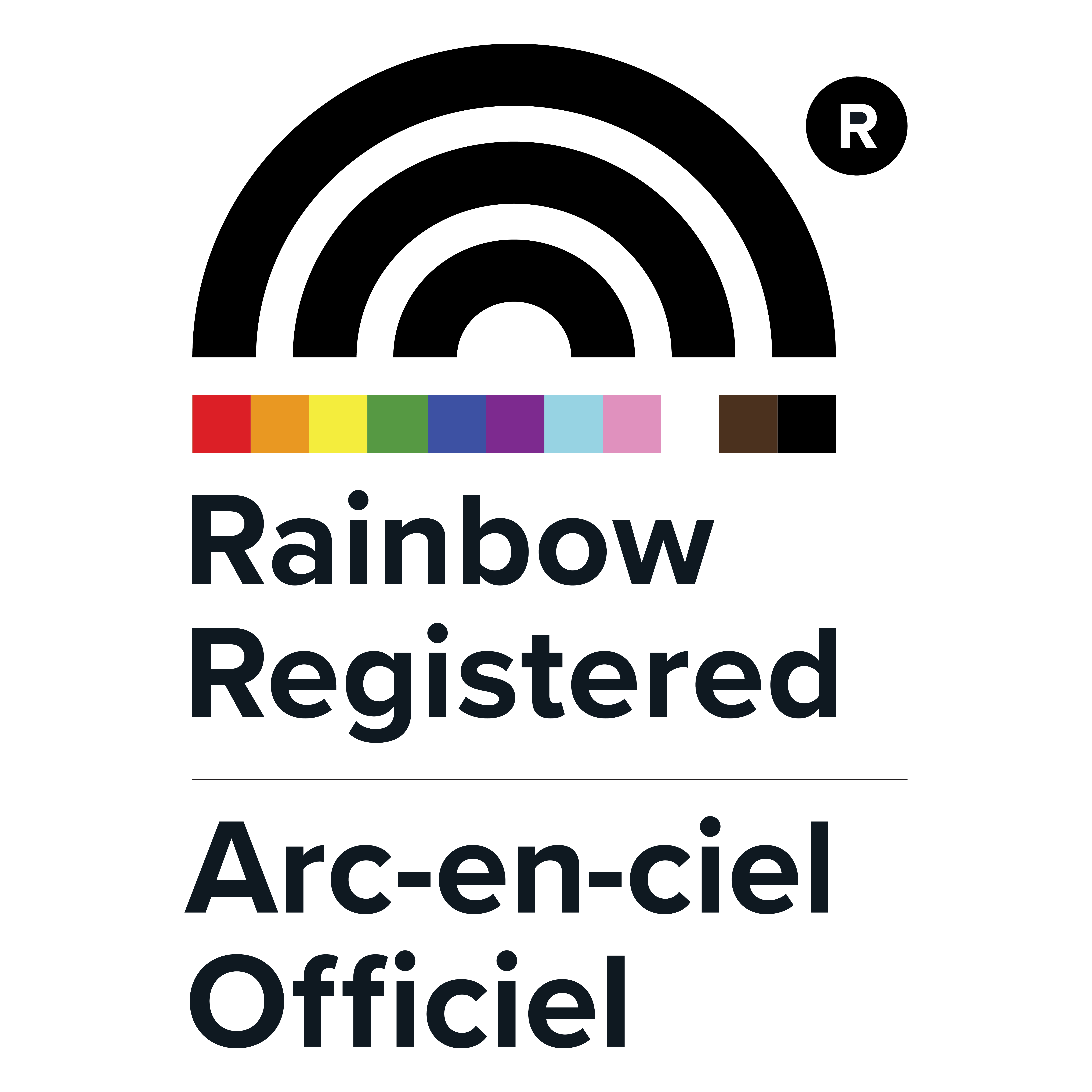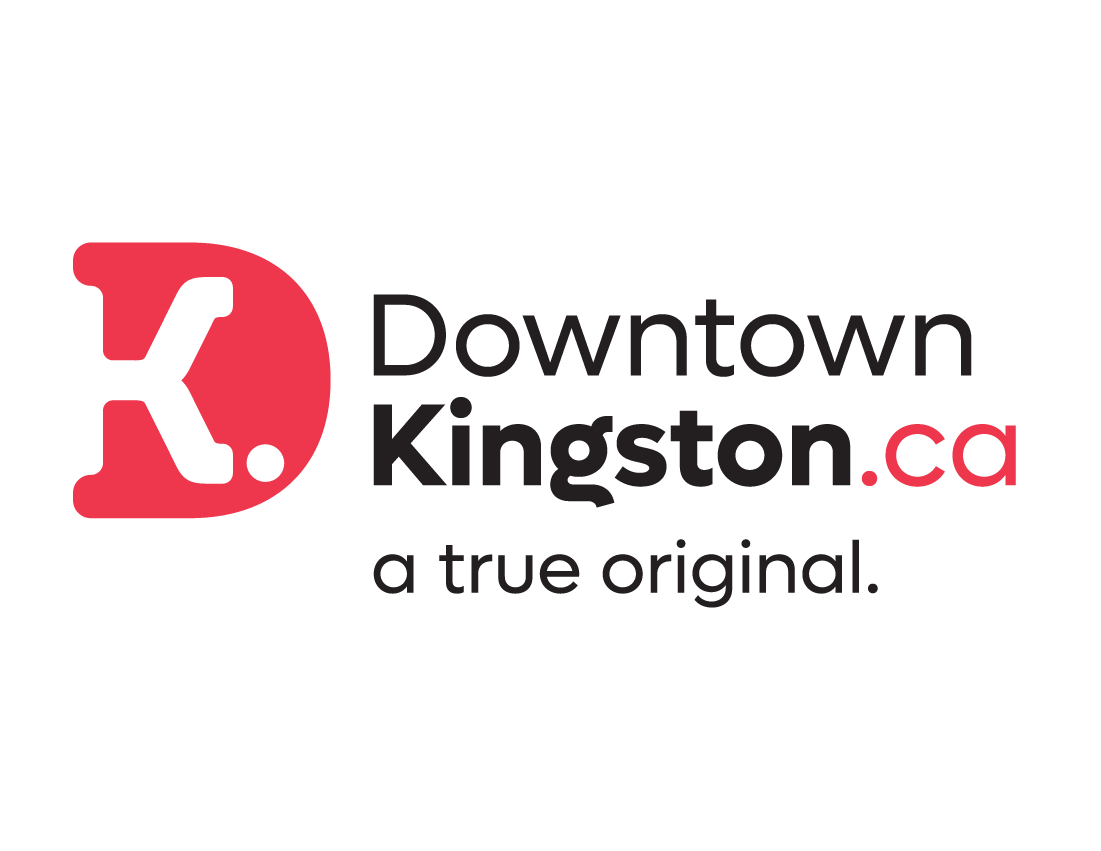Pat Boudreau was just in his twenties when he arrived at Kingston Penitentiary (KP) as a correctional officer in 1982. By then, the foreboding maximum security prison on the banks of Lake Ontario had already been open for 147 years, earning a reputation for being home to some of Canada’s most infamous inmates. Pat stayed right up until KP closed in 2013.
What were some of your main duties as a correctional officer at KP, Pat?
Well, our job was to maintain the security of the institution, try and keep peace. So we’d do counts, do shift work, make sure everything was kosher and that there was nothing illegal going on. So there was all kinds of searching and different things like that.
Three decades is a long time to stay in any one job. Why did you stick around at KP for that length of time?
The years went by so fast, to tell you the truth. I moved from Dorchester, New Brunswick, where I worked as a correctional officer since ’77, to KP in 1982, started a family, moved a couple of times, built a house, stayed at KP. It really just progressed to a point where before you know it, we all got the letter and the notification on the news that we were done, KP was closing.
When you look back over your time at KP, what do you think about?
It’s remembering how staff responded when there were troubles. We become such a cohesive family. And it doesn’t matter who’s in trouble, it doesn’t matter if it’s a guard or a nurse or a shop instructor. When there’s somebody in need and we have to try to get them home — and we might get them home broken — but for us to get them home to their families, that was our number one priority. And we did that my whole career except for once, we lost a fellow officer. And a day never goes by that I don’t think of it.
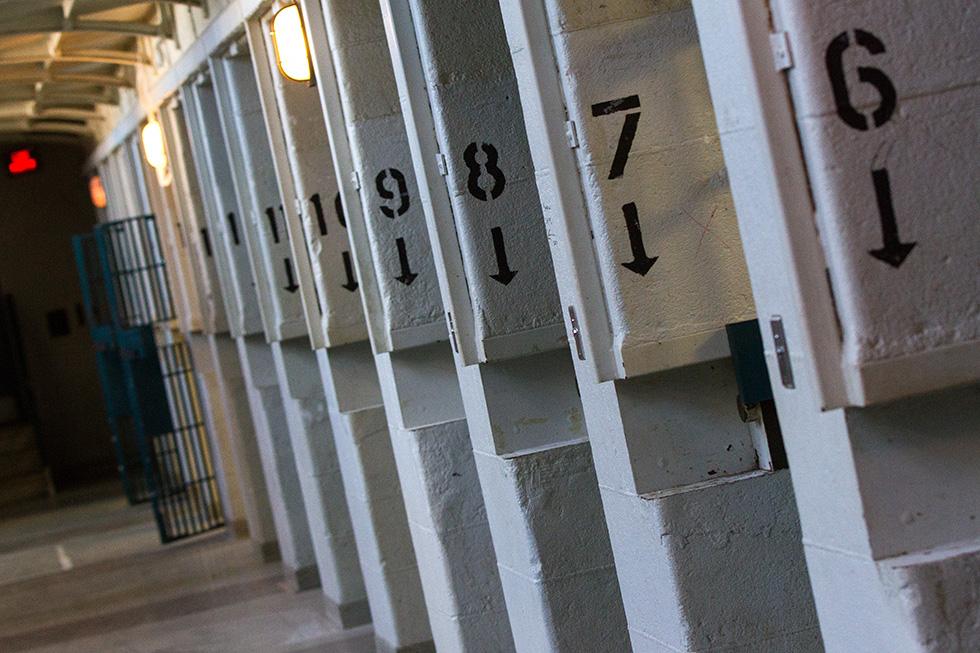
Other than that unfortunate day, are there other particular stories that come to mind when you think back about your time at KP?
Some of the things that really stand out are hostage takings, and we had to shoot an offender and he died. That was back in the 1980s in the shop dome. The escape of Ty Conn, too, and I remember him writing on his calendar, “Gone Fishing.” So we go into his cell and we see that on his calendar, and he went fishing alright, he made a fool of us. I also tell a story that on Halloween at the Regional Treatment Centre, where I worked for the last few years, we would take in masks. And when we would do our last walk of the shift at 10 o’clock at night, we’d walk to the end of the range and when we’d come back, we’d have the mask on. It was always funny. But when things turned bad, we had to be guards. And you had to be able to switch that in a heartbeat.
Outside of getting your peers home safe every day, what were some of your other goals as a correctional officer? Did you see yourself as playing a role in the inmates’ rehabilitation?
You know, I never once used the word “rehabilitation” because we never believed in it. Thinking back of when I went to work every day, my goal was to get my peers home and to make things safe. Working at the Regional Treatment Centre was a different working environment, though. They were all mentally challenged, physically challenged, there was a sex offender unit there, and we all wanted to work there because there was a lot of job satisfaction there.
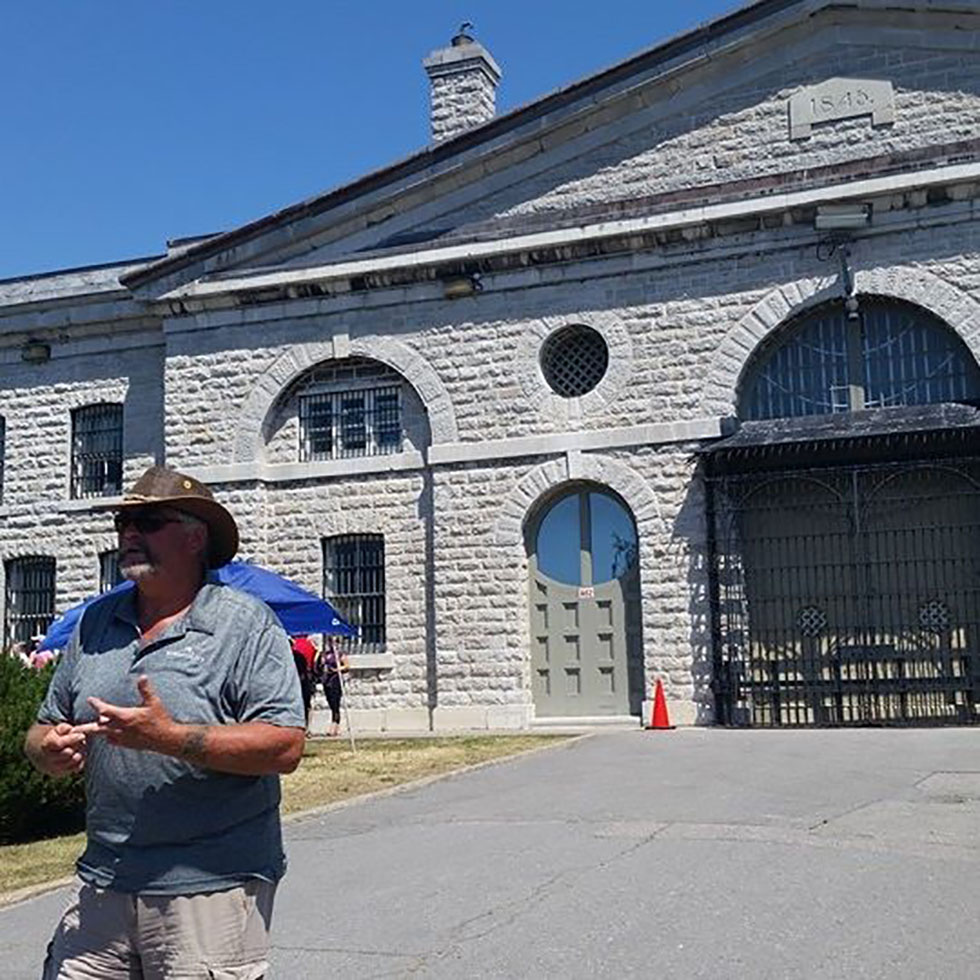
What was satisfying about working at the treatment centre?
Well, we could see the change in a lot of these guys once they took their medication. And they would call us by first name, and it became not personal because you never did trust them, but they looked up to you, they would ask for your help. I’ll never forget one night when one guy said to me, “Pat, are you workin’ tomorrow?” And I said, “Yeah.” And he said, “Would you wake me up in the mornin’, because we’ve got bacon on tomorrow and I don’t want to sleep through it.” I know a lot of guards would no way want to work in that environment, and when I started my career there was no way that I wanted to either. Not on your life. It just evolved to that.
Now that it’s over, do you miss the job?
Not a bit. I miss my peers a lot. But the job, not a bit. I don’t miss getting up in the morning and going in there and doing what we did best, not at all.
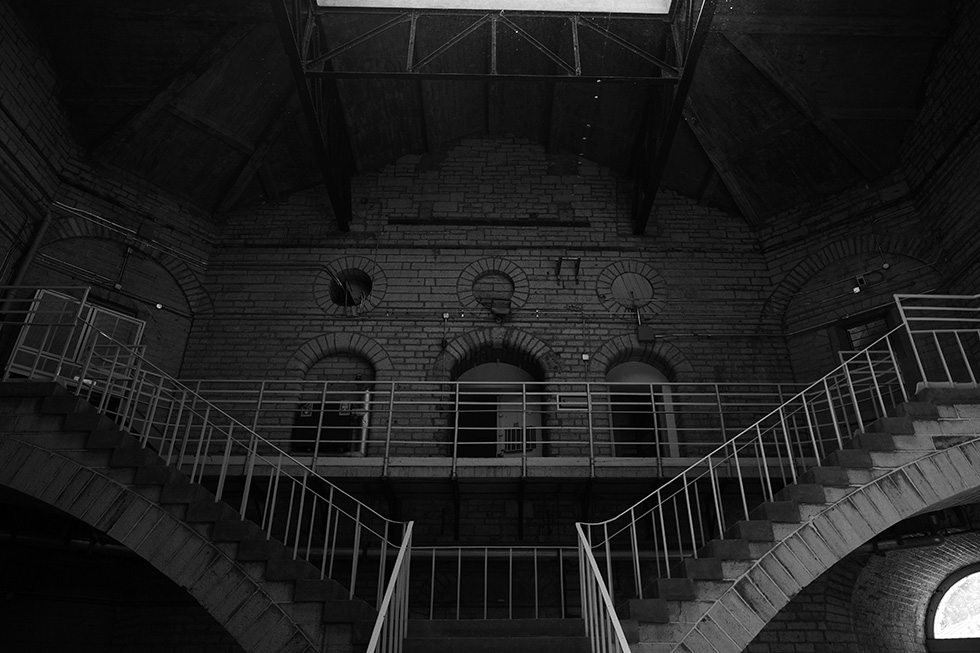
Why did you want to return to help out with the tours?
I wanted to do it because if I had an opportunity to help show her [KP] off the way she should be, I just wanted to give one little piece of what I knew. I just wanted to say it. We don’t talk about the blood and the guts and gore because, you know, some people want to hear that, but the majority don’t. They want to hear some fun stories, they want to hear how the jail worked. So that’s why we all wanted to join; we all wanted to give our little piece of it. Some guys were there in the 60s, some guys never started until the mid-80s, so we all have a different perspective on it.
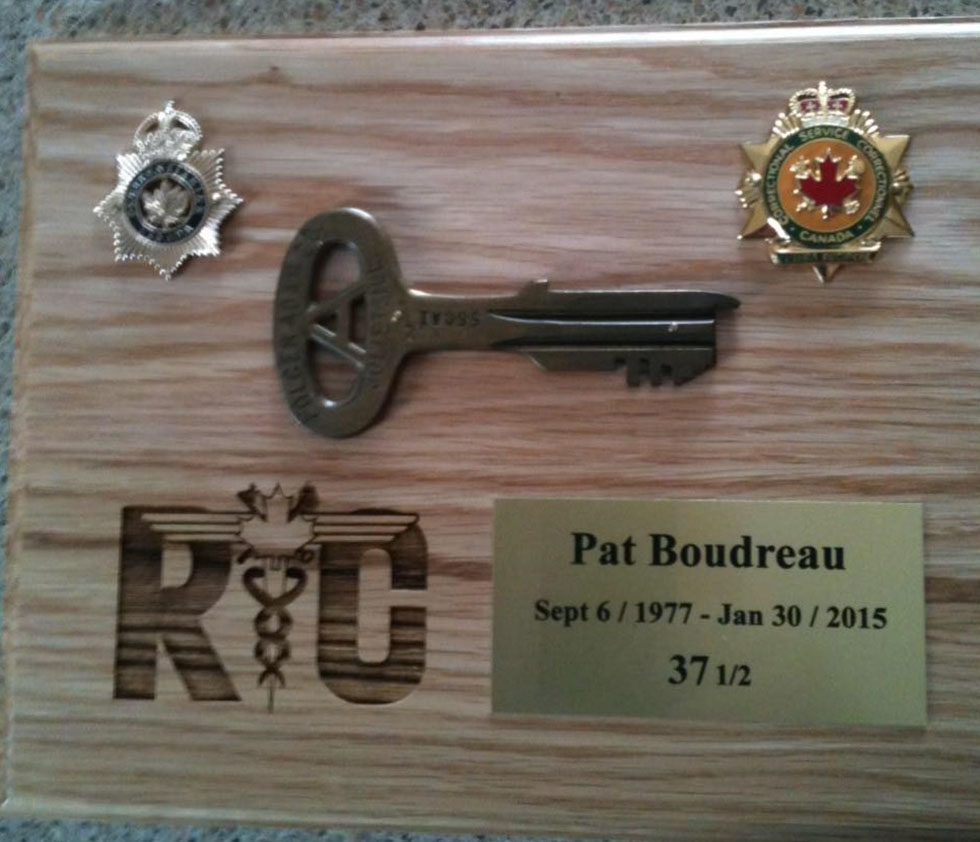
Pat received this plaque when he retired from Correctional Service Canada in 2015. The wood is from Kingston Penitentiary and the key was once used to operate the main gate of the prison. “I am so proud of that plaque,” says Pat.
Planning to take the tour? Check out our special offers and accommodation packages here.
The 2020 Kingston Pen Tour season runs through October 31. Tickets and packages are on sale now.

